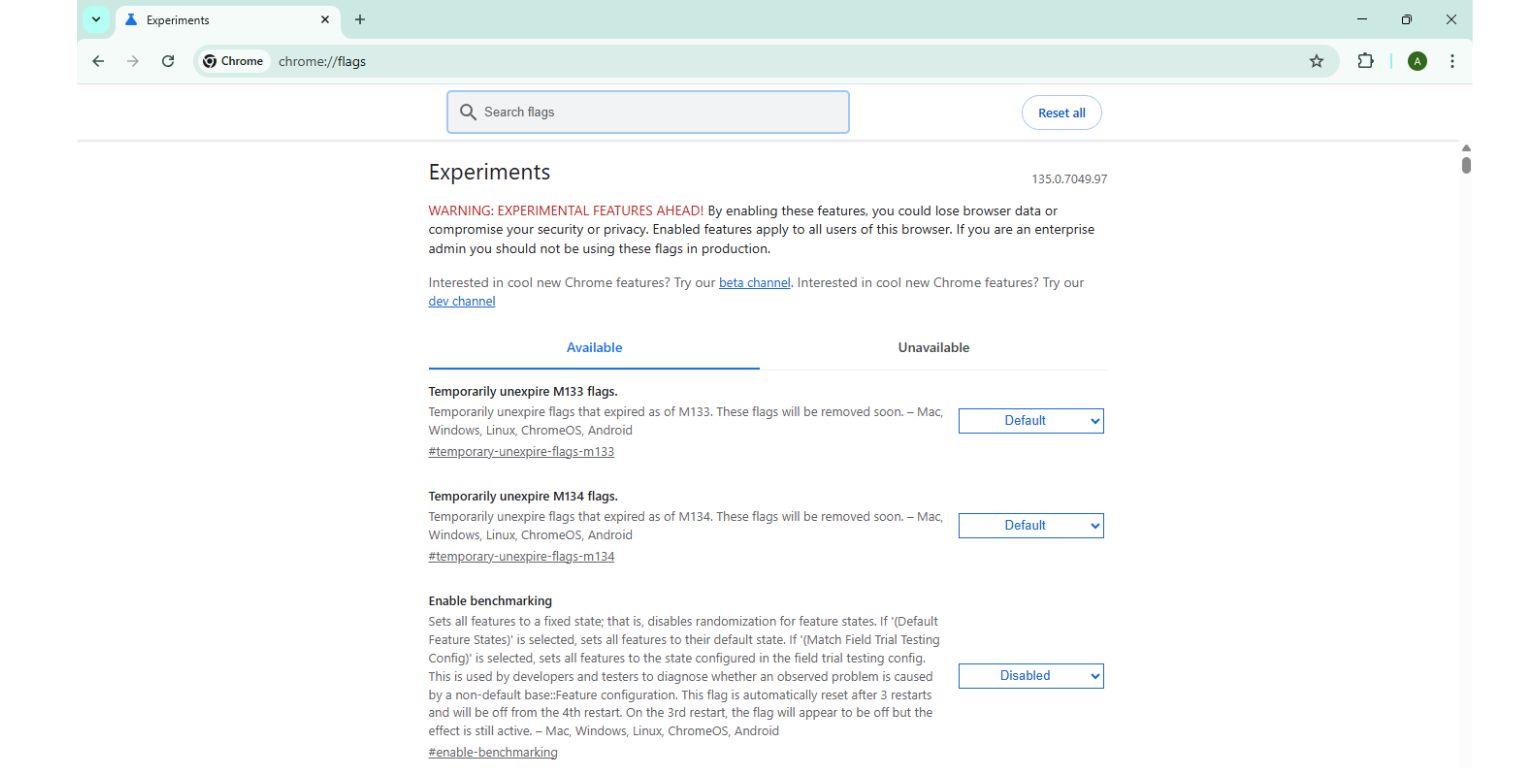Google Chrome has more features than what you see in the settings menu. Some of the most powerful tools are hidden under chrome://flags, a page where users can turn on experimental features that aren’t yet available in the main version of Chrome.
This guide explains what Chrome flags are, how to activate or deactivate them, and what you need to know before using them.
What Are Chrome Flags?
 Chrome flags are hidden settings that unlock experimental or advanced browser features. These settings are part of the Chromium project, which powers Chrome and other browsers like Microsoft Edge, Brave, and Opera.
Chrome flags are hidden settings that unlock experimental or advanced browser features. These settings are part of the Chromium project, which powers Chrome and other browsers like Microsoft Edge, Brave, and Opera.
Developers use flags to test upcoming features before they’re released to everyone. Some flags improve speed, change how the browser looks, or add new behaviors to tabs, downloads, and other features.
These settings aren’t always stable. They may cause bugs, slowdowns, or crashes—which is why they’re not found in the normal settings menu.
How to Access chrome://flags
Opening the flags page is simple. In your Chrome address bar, type:
chrome://flags
and press Enter.
This brings up the experimental features dashboard. On the desktop version, it looks like a searchable list of hidden tools. You can use the search bar at the top to find specific flags. Chrome flags are also available on Android—just open the mobile Chrome app and enter the same URL.
Each flag includes a description and a drop-down menu to change its state.
How to Enable or Disable Chrome Flags
 Changing a flag only takes a few clicks:
Changing a flag only takes a few clicks:
- Open
chrome://flags - Use the search box to find a feature (e.g., “Smooth Scrolling”)
- Click the drop-down menu next to the flag
- Choose Enabled or Disabled
- Click the Relaunch button at the bottom to apply the change
Chrome needs to restart for the flag to take effect. Changes are not permanent—you can go back and adjust or reset any flag at any time.
Examples of Useful Chrome Flags
Some flags can noticeably improve browsing. Here are a few favorites:
- Parallel Downloading
Speeds up file downloads by using multiple threads. - Smooth Scrolling
Makes scrolling feel more fluid and less choppy, especially on laptops. - Tab Groups
Lets you organize multiple tabs into groups for easier navigation. - Experimental QUIC Protocol
Uses a faster, more secure connection protocol to speed up browsing.
These flags are often tested in the Canary or Beta versions of Chrome before they reach the stable channel.
Are Chrome Flags Safe? What You Should Know
Most flags won’t harm your computer, but they aren’t guaranteed to work perfectly. That’s why Google hides them behind a warning label.
Flags can:
- Slow down your browser
- Break certain websites
- Use more memory
- Create bugs in extensions or tab behavior
- Be removed without warning in future updates
For best results, enable one flag at a time and test its effect. If Chrome crashes or behaves strangely, it’s likely due to a flag.
How to Reset All Chrome Flags to Default
If things go wrong or you want to undo all changes:
- Go back to
chrome://flags - At the top-right, click Reset all to default
- Relaunch Chrome when prompted
This clears all modified flags and returns Chrome to its default state. It’s the best option if you forget which flags you changed or if the browser starts crashing.
When Should You Use Chrome Flags?
Use flags if you want early access to new Chrome features or want more control over your browser. They’re especially helpful if you enjoy testing, tweaking, or optimizing your browsing experience.
However, flags should be avoided on important work machines or devices used by others. Since these settings can affect stability, it’s best to experiment on personal devices.
Conclusion
Chrome flags give you access to powerful, hidden features that can boost performance, improve usability, or introduce entirely new tools. As long as you use them carefully—and know how to disable or reset them—they can make Chrome a more flexible browser.
Remember, these features are experimental. Try them with caution, use only what you need, and always know how to get back to the default settings.
Have a favorite Chrome flag or question about one? Share it with others, and help the community discover new ways to improve their browser experience.


